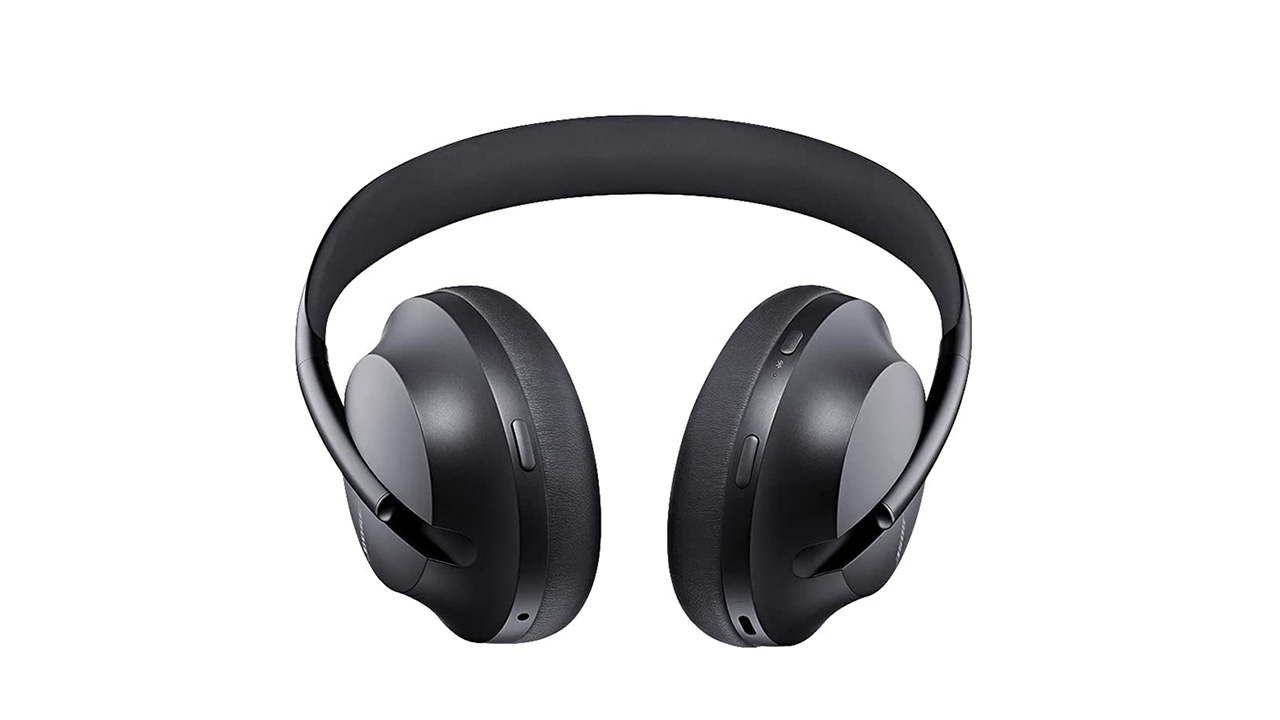Louder Verdict
Classy and capable, the Bose 700 can be considered premier league wireless Bluetooth headphones. Their design is slick, and musicality unimpeachable. We dig their clarity and spacious presentation. On the downside, battery life lags behind rivals, and the app is a bit sucky.
Pros
- +
Lightweight, stylish design
- +
Excellent noise cancelling
- +
Supremely detailed
Cons
- -
Battery life not best in class
- -
Clunky app
You can trust Louder
More stylish than Bryan Ferry doing The Strand, the Bose 700 wear their premium price tag well. Just hanging them around your neck as you loaf around the house snacking on a bag of Cheetos, will make you feel cool and sophisticated.
It’s not just the design that’s high class. These cans employ peerless noise cancelling, and boast a sonic clarity that borders on surgical. If you want headphones that get you closer to what engineers hear at the mix desk, these will do it.
But they've been around a few years now, and newer rivals are stealing their thunder.
Bose 700 review: Design
This category is a quick win. The Bose 700 are as easy on the eye as they are comfortable on the head.
They are available in both black and white variations, and both feature a stainless steel headband that benefits from generous gel padding. The earcup cushions are soft and wrapped in protein leather. There’s not a lot of detailing on the enclosures, just a trio of buttons, USB-C charge point, and understated Bose logo.
Touch and swipe controls are available for everyday use. Sliding your finger up or down on the right cup controls volume, while a deft tap manages Play and Pause. It’s not immediately intuitive, but you get used to it.
The Bose 700 ship with a rather plain, plastic shell case, which includes an optional 3.5mm lead for wired connection. Don’t expect to put them in your pocket. The absence of traditional ear cup hinges means they don’t fold neatly down, so you’ll need something sizeable to keep them in.
The latest news, features and interviews direct to your inbox, from the global home of alternative music.
Bose 700 review: Features

Bose is no stranger to noise cancellation technology. It’s been making their QuietComfort range of headphones for the best part of two decades, and in many ways it’s been ahead of the game. The Bose noise cancelling headphones 700 combine clever DSP with advanced acoustic processing, and it’s extremely effective.
The headphones utilise eight microphones in total, six of which are dedicated to the art of noise cancellation. You can select the appropriate level of muffling, based on a sliding 10-point scale, using the Bose Music app. Select the Conversation mode, if you want to hear what’s going on around you. This will pause your music , and lets ambient noise filter through - good for hearing station announcements and such like.
That app, it has to be said, isn’t very good. Not only is it a bit threadbare when it comes to features, it’s clunky in operation. Just when you think you’ve partnered your headphones, it’ll ask to repeat the process.
Thankfully, the quality of noise cancellation is high. For general use, we found five comfortable enough, if you want full sonic isolation dial NC up to 10. This offers anechoic chamber levels of disconnection. You’ll not be easily disturbed.
There’s also voice assistant support for Amazon Alexa, Siri and Google Assistant, useful for music playback, messages and notifications.
The elephant in the room is the relatively limited battery life, which clocks in at just 20 hours. By way of comparison, highly rated rivals like Sony’s WH-1000XM4 stretch nearer to 30 hours. If you run low on juice, 15 minutes recuperation on the wall will give you 3.5 hours of playtime.
Bose 700 review: Sound
Refined and articulate, the Bose 700 are at their best showcasing vocals, keyboards and synths, but they do a nice job with guitars too. Wargasm’s Scratchcard Feeling through Tidal's Ultra HD service showcases this sweeter side. Brilliant for pinpointing detail, the soundstage is airy and light.
As you’d expect of higher-end head-fi, they’re particularly good at conveying depth and nuance. Ichika Bachika, from Japanese kawaii techno metal troupe PassCode played through Amazon Music, attacks from all sides: frenetic guitars left and right, death growls upfront, propulsive percussion, but the Bose never lose focus. They’re agile AF.
Generally, the Bose 700s favour clarity above attitude. They’re a little light on deep bass, and lack the brutal edge you might be looking for when leaping around to Trivium, but drop Avril Lavigne's Bite Me through Tidal's Dolby Atmos, and they’re an absolute delight. They can stomp too, as Trash Boat’s Bad Entertainment proves. Lower-bass resolution is reassuringly forceful.
Bose 700 review: The alternatives
At this more rarefied end of the over-ear market, competition largely comes from Bowers & Wilkins PX7 and the previously mentioned Sony WH-1000XM4.
When it comes to noise cancelling prowess, Sony probably edge it, not least because their silicon is fresher. They also feature leading edge audio processing with smart AI, and more obviously, offer far better battery life at 30 hours in the wild.
The Bowers & Wilkins PX7 are more overtly audiophile by design, with comparably excellent audio tuning and clarity, but they can run you a tad more at retail than these Bose range-toppers... but not always.
Steve is a home entertainment technology specialist who contributes to a variety of UK websites and mags, including Louder Sound, Yahoo UK, Trusted Reviews, T3, The Luxe Review and Home Cinema Choice. Steve began his career as a music journo, writing for legendary rock weekly Sounds, under the nom de plume Steve Keaton. His coverage of post punk music was cited in the 2015 British Library exhibition Terror and Wonder: The Gothic Imagination, as a seminal influence on the Goth music scene.


